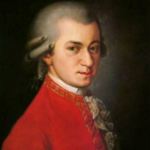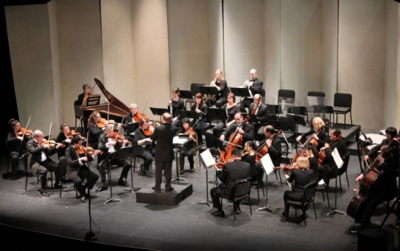If you’ve never been to a classical music concert at Knoxville’s Bijou Theatre, then any mention of the hall’s acoustic subtlety is virtually meaningless—and you probably aren’t reading this anyway. However, audiences that frequent the Knoxville Symphony Orchestra’s Sunday afternoon Chamber Classics Series concerts at the Bijou know full well the incredible clarity of un-amplified sound in the hall and its demands on musicians. They know that a back row seat in the balcony is an equal to any other in the house in terms of volume and intelligibility. And musicians know that even the tiniest of errors or minute lapses of ensemble playing are magnified way beyond their true importance in the grand scheme of things.
 That’s why when you hear what sounds like perfection in the Bijou, it probably is. Such was the case in the second half of Sunday’s installment in the KSO Chamber Classics Series, titled “Mozart and More,” not surprisingly, a mostly Mozart afternoon. Maestro James Fellenbaum came back from intermission with the Mozart Serenade No. 12 in C minor, K. 388, a wind octet for pairs of oboes, clarinets, bassoons, and horns. The serious tone of the work implies depth and complexity, something the ensemble delivered quite intelligently and with a lot of satisfying detail.
That’s why when you hear what sounds like perfection in the Bijou, it probably is. Such was the case in the second half of Sunday’s installment in the KSO Chamber Classics Series, titled “Mozart and More,” not surprisingly, a mostly Mozart afternoon. Maestro James Fellenbaum came back from intermission with the Mozart Serenade No. 12 in C minor, K. 388, a wind octet for pairs of oboes, clarinets, bassoons, and horns. The serious tone of the work implies depth and complexity, something the ensemble delivered quite intelligently and with a lot of satisfying detail.
At the same time Mozart was writing the Serenade in C minor in 1782, and involved in the courtship and marriage to Constanza in Vienna, he was also writing a serenade for orchestra at the request of Salzburg Burgomaster Sigmund Haffner for a party. Without doubt, Mozart liked the work that he had turned out quickly, and later that year set about to adapt it into a symphony. He accomplished this by dropping one of the minuets and the March, adding flutes and clarinets, and creating from the remainder the “Haffner” symphony, the Symphony No. 35 in D. Major, K. 385.
By following the serenade with the “Haffner,” Fellenbaum seemed to luxuriate in the reminders, particularly in the Andante slow movement, of the serenade-like nature of the symphony’s origins. However, it was the opening movement that catches your attention, a majestic movement in which Fellenbaum kept the bold pronouncements contrasting with surprise intervals, and infectious rhythms driven by the insistent energy of the strings. The finale movement was equally hard to resist, its buoyant giddiness and rapidity having all the theatricality of a Mozart opera overture.
By comparison, the first half of the concert was relatively sedate. The Serenade in G Major, K. 525, popularly known as Eine kleine Nachtmusik, should have been more fun and delicious, given its obvious familiarity in tune and texture. The “More” of “Mozart and More” followed, Richard Wagner’s Siegfried Idyll. Although one typically hears this Wagner—or any Wagner—with a full-size orchestra these days, it was charming to hear it with a chamber orchestra—probably closer in truth to its original performance in the Wagner home. However, in this case, the Bijou’s subtlety and clarity worked against Fellenbaum and the orchestra, with string accuracy feeling a bit tentative and texture a bit too thin against the winds. And, the difficulty of making solid pianissimo ensemble entrances showed up in several places, notably the final, quietly sincere and resolving E major chords—solidity issues that had vanished in the second half, replaced by lusciously perfect ensemble playing.








